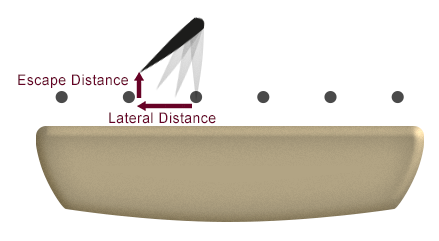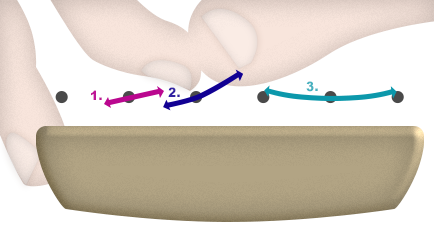I wondered if any of you have come up with an optimal distance for each? (I know this is subjective)
This is one area where I have really drastically changed over the last few years.
I initially didn’t have much of either. But when I tried to develop my 2NPS form, I started escaping a lot more, close to a centimeter. But now I seem to be doing less and less escape, but more lateral movement to help overcome my weaknesses with outside transfers. My lateral movement now extends all the way to the adjacent strings. But now, my escape is barely anything.


